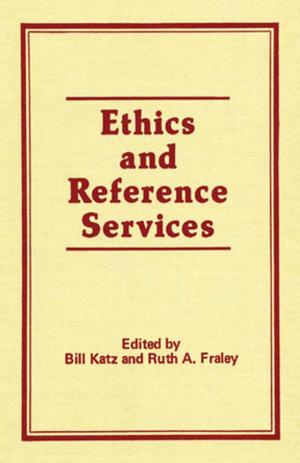Lean Maintenance
A Practical, Step-By-Step Guide for Increasing Efficiency
Business & Finance, Management & Leadership, Industrial Management, Industries & Professions, Quality Control| Author: | Javier Girón Blanco, Torsten Dederichs | ISBN: | 9781351712729 |
| Publisher: | Taylor and Francis | Publication: | January 29, 2018 |
| Imprint: | Productivity Press | Language: | English |
| Author: | Javier Girón Blanco, Torsten Dederichs |
| ISBN: | 9781351712729 |
| Publisher: | Taylor and Francis |
| Publication: | January 29, 2018 |
| Imprint: | Productivity Press |
| Language: | English |
The book is about applying Lean manufacturing principles to industrial maintenance in order to improve the efficiency and be able to do more with the same (or less) resources. By industrial maintenance we mean the maintenance that takes place in factories and industrial facilities. The book is the result of multiple improvement projects carried out by the authors in various industrial settings and sectors in the past 10 years.The approach works and can be applied in any industry. It yields results without investment. The book is a step-by-step guide that takes the reader through the maintenance process, from equipment failure to finished repair. In each step of the process, the typical inefficiencies are explained and tools are given to improve the process. The book is meant to be used as a guide in an improvement journey. The improvement approach presented in the book is very close to the shop floor and instructs the reader to engage with all team members in the maintenance department in every step of the process, in order to make the improvements sustainable.
If one looks at the main market indexes, between one third and one half of companies on those indexes belong to the industrial sector: automotive, power generation, basic materials, chemicals, consumer goods, et cetera. Those companies spend on average 2 – 5% of plant replacement value per year on maintenance. About one third of this cost is maintenance labor.
The maintenance work that gets done every day in factories around the world is typically inefficient, from a Lean perspective: time is wasted, different tasks are not properly coordinated, job durations are overestimated and job plans, when they exist, are thus "inflated" to cover up the inefficiency.
All this happens because maintenance tends to be the "forgotten" area of efficiency in industrial companies, as much of the improvements are carried out on the (literally) productive areas of the factories. When companies set out to "improve" maintenance, they typically do it through budget cuts that can risk the reliability of the equipment.
The authors believe there is a better way to do more with the same resources through a careful
review of the current way of working and the introduction of Lean.
With this book , the authors try to bring to maintenance managers and practitioners the tools they
need to quickly improve efficiency (in a matter of weeks) without any investment.
The book is about applying Lean manufacturing principles to industrial maintenance in order to improve the efficiency and be able to do more with the same (or less) resources. By industrial maintenance we mean the maintenance that takes place in factories and industrial facilities. The book is the result of multiple improvement projects carried out by the authors in various industrial settings and sectors in the past 10 years.The approach works and can be applied in any industry. It yields results without investment. The book is a step-by-step guide that takes the reader through the maintenance process, from equipment failure to finished repair. In each step of the process, the typical inefficiencies are explained and tools are given to improve the process. The book is meant to be used as a guide in an improvement journey. The improvement approach presented in the book is very close to the shop floor and instructs the reader to engage with all team members in the maintenance department in every step of the process, in order to make the improvements sustainable.
If one looks at the main market indexes, between one third and one half of companies on those indexes belong to the industrial sector: automotive, power generation, basic materials, chemicals, consumer goods, et cetera. Those companies spend on average 2 – 5% of plant replacement value per year on maintenance. About one third of this cost is maintenance labor.
The maintenance work that gets done every day in factories around the world is typically inefficient, from a Lean perspective: time is wasted, different tasks are not properly coordinated, job durations are overestimated and job plans, when they exist, are thus "inflated" to cover up the inefficiency.
All this happens because maintenance tends to be the "forgotten" area of efficiency in industrial companies, as much of the improvements are carried out on the (literally) productive areas of the factories. When companies set out to "improve" maintenance, they typically do it through budget cuts that can risk the reliability of the equipment.
The authors believe there is a better way to do more with the same resources through a careful
review of the current way of working and the introduction of Lean.
With this book , the authors try to bring to maintenance managers and practitioners the tools they
need to quickly improve efficiency (in a matter of weeks) without any investment.















